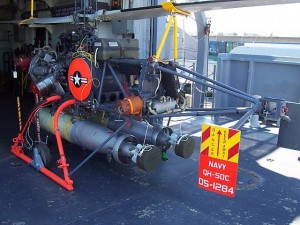
Curing cancer, delivering carbon free energy and rescuing people trapped after earthquakes are noble pursuits. In a time where fundamental research is under pressure to deliver, lofty goals like this are glibly trotted out in grant applications to justify project funding, and then again in press releases once the work is done to justify the next grant application. I’m throwing stones, but am very conscious that I am not without sin and nor am I living far from my glass house.
While basic research, even apparently far removed from product or cure, undeniably adds to our knowledge base and improves society in unpredictable ways, there is one line of research that warrants extra scrutiny – the military.
Getting funding to do your basic research is ever more difficult in struggling national economies. It can be tempting to get into bed with allsorts, but one has to consider the ethics of taking money from certain sources. I have recently been drawn to the John Templeton Foundation who fund a lot of my kind of research, but some digging has put me off – their founder was, and now his son is, involved in conservative right wing lobbying in the USA. Whatever about the unease of taking money from evolution denialists to get the research done, taking money from the military brings a whole lot more pressing and worrying complications.
By far and away one of the coolest bits of engineering with a biological twist I have ever seen are swarms of flying robots – in particular these examples from the GRASP lab at University of Pennsylvannia. Truly amazing. A marriage of collective behaviour and gizmos made in heaven.
My problem is that many people working in this field gleefully sell us the “search and rescue” potential of these automous swarm. These robots will move about complex environments, scanning and evaluating it like a swarm of foraging ants and locate people trapped under rubble. All well and good, but many of these groups are funded by the military – in the case of GRASP they list projects with input from DARPA and Army Research Laboratories (ARL).
For every innocent engineer in a university playing with cool quadcopters and getting them to play the James Bond theme song, there is a bunch of engineers in military research labs dreaming up new ways to kill people with them. These militarists are smart people: clever scientists, genius engineers and expert in warfare. Their goals are clear – military superiority in the case of DARPA and enablement of “full-spectrum operations” for ARL. Although they all skirt around the issue, this means one thing above all – being able to kill more of your enemy than they can of you.
If killing was my business, I know what I would be doing with swarms of potentially autonomous robots – seek and destroy on unprecedented scales of efficiency. Hordes of flying bombs with redundancy inherent in the system. Lose one and it doesn’t matter, there are thousands following in its wake. Interaction rules that result in network structures that optimise spacing between robots bombs to wreak maximum damage. No more single predator drones patrolling the mountains of southern asia, but swarms of the damn things.
Sometimes the clue is in the name: “grenade camera” leaves little to the imagination. Here’s a trite justification for this 3d camera in a ball – “It is thought the new technology would enable soldiers to see into potential danger spots without putting themselves at risk of ambush”. Obviously protecting your own soldiers is important, but the reality of war is you would drop one of these cutely dubbed “I-balls” around the corner, calculate the proportion of children to combatants in the room and hit the “go boom” button if you were satisfied with the odds.
Behind the games set up in which technologists pit their creations against each other in an action packed fun day out, lies a whole raft of people whose job it is to turn these toys into weapons.
Running,
On our way
Hiding,
You will pay
Dying,
One thousand deaths
Searching…
Search and Rescue
Seek and Destroy
– Seek and Destroy by Metallica from their debut album Kill ‘Em All.
Author: Andrew Jackson, a.jackson[at]tcd.ie, @yodacomplex
Image Source: Wikicommons



